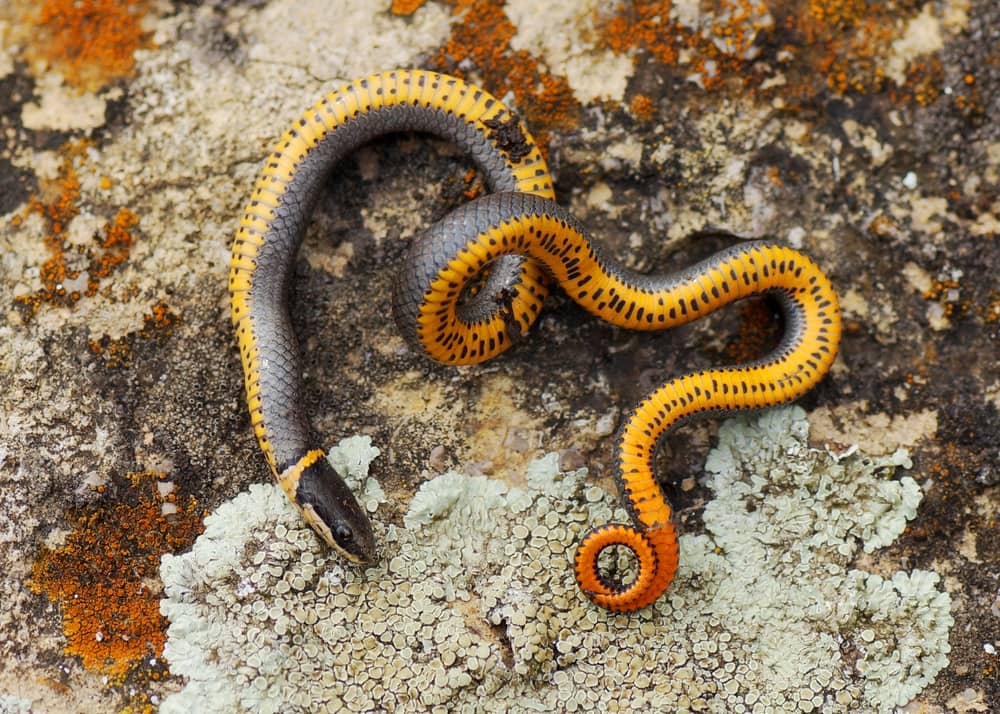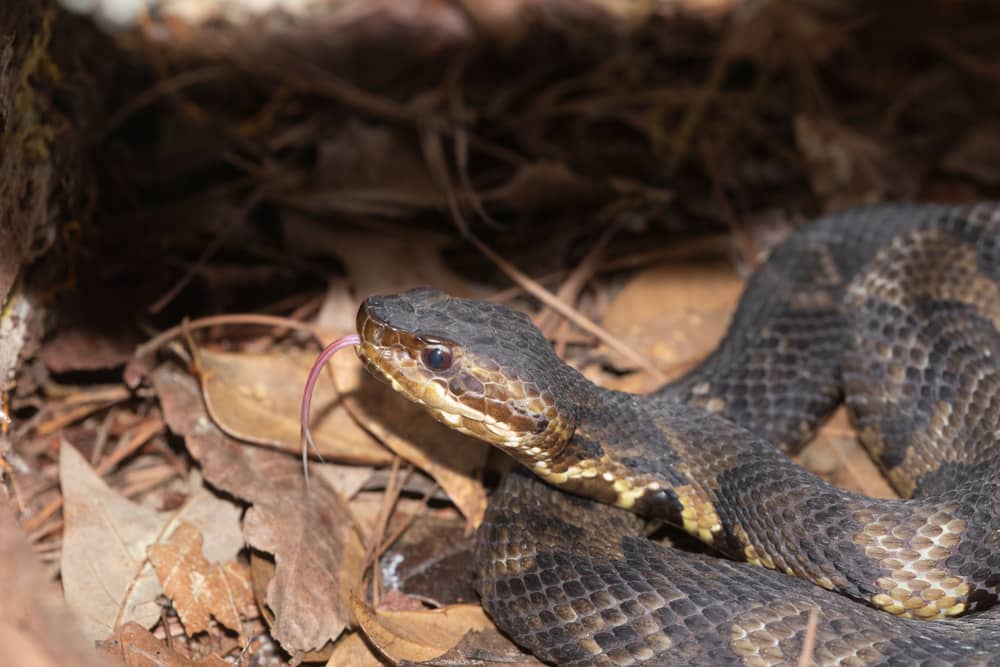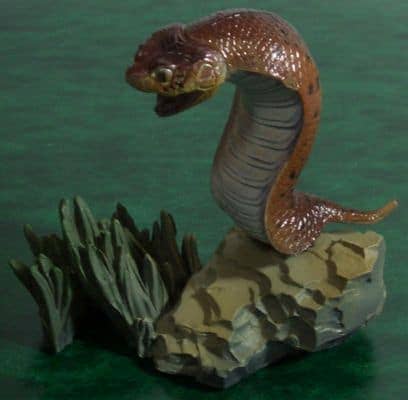Why Learn About Ringneck Snakes?
Understanding creatures like the ringneck snake can help us appreciate the smaller, less-known members of our ecosystem. Whether you’re a nature lover, a herpetology enthusiast, or just curious about what slithers in your backyard, this profile has something for you.
Quick Facts at a Glance
-
Scientific Name: Diadophis punctatus
-
Length: 10–15 inches (25–38 cm)
-
Color: Dark gray or black with a bright orange or yellow ring around the neck
-
Venomous?: Mildly venomous (but harmless to humans)
-
Found in: North America
-
Behavior: Nocturnal and shy
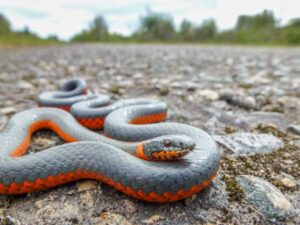
Classification and Taxonomy
Scientific Name and Common Names
The ringneck snake’s scientific name is Diadophis punctatus. It belongs to the family Colubridae, the largest snake family in the world. Common names include:
-
Ring-necked snake
-
Ringneck snake
-
Collared snake
Subspecies and Regional Differences
There are over a dozen subspecies of ringneck snakes, including:
-
Northern Ringneck Snake (D. p. edwardsii)
-
Southern Ringneck Snake (D. p. punctatus)
-
Mississippi Ringneck Snake (D. p. stictogenys)
Each subspecies may have slight differences in ring color, size, and belly pattern.
Physical Description
Size and Body Structure
These snakes are small and slender, rarely growing beyond 15 inches. Their delicate bodies allow them to move quickly through leaf litter, under logs, or inside loose soil.
Unique Coloration and Markings
The standout feature? That bright, flashy collar. Usually yellow, orange, or red, the ring contrasts dramatically with their dark body—like nature’s version of a necklace.
How to Identify a Ringneck Snake
Look for:
-
A solid black, dark gray, or bluish-black body
-
A thin, unbroken ring around the neck
-
A vibrant orange or red belly, often with small black spots
-
Smooth, shiny scales
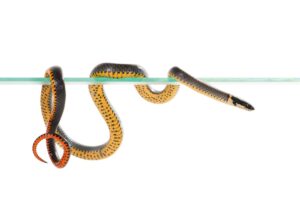
Habitat and Range
Geographic Distribution
Ringneck snakes are widely distributed across the United States, stretching from the East Coast all the way to the western deserts, and even parts of Canada and Mexico.
Preferred Environments
They prefer moist, forested areas but can also thrive in:
-
Grasslands
-
Rocky hillsides
-
Pine forests
-
Suburban gardens with plenty of cover
Behavior and Lifestyle
Nocturnal Habits
These little snakes are mostly nocturnal. You’ll rarely see them during the day—they’re out hunting or exploring when the sun goes down.
Defensive Mechanisms
Ringneck snakes rarely bite. Instead, they put on a dramatic show:
-
Curling their tail to show off a bright red underside
-
Emitting a foul-smelling musk
-
Playing dead (sometimes!)
Social and Solitary Behavior
They’re solitary by nature but are known to hibernate communally in winter—sometimes dozens will gather under logs or rocks.
Diet and Hunting Tactics
What Do Ringneck Snakes Eat?
These guys aren’t picky eaters. Their diet includes:
-
Earthworms
-
Salamanders
-
Slugs
-
Small frogs
-
Insects
How They Capture Prey
They use mild venom (harmless to humans) to subdue prey. Once bitten, the prey is held and swallowed whole. They also constrict to a small degree—not like a boa, but enough to help immobilize squirmy meals.
Reproduction and Lifespan
Mating Season and Courtship
Ringneck snakes mate in the spring or fall. Males use their scent to track down females and engage in gentle nudging to initiate courtship.
Egg Laying and Hatchlings
Females lay 3–10 eggs in early summer, usually in a moist, hidden location. The eggs hatch in late summer, and the baby snakes are miniatures of their parents—fully independent from day one.
Lifespan in the Wild
They can live up to 10 years in the wild, although most live 4–6 years due to predation and environmental hazards.
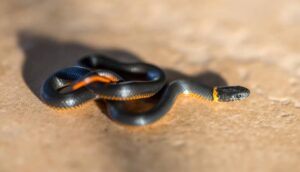
Ringneck Snake and Humans
Are They Dangerous?
Nope! Despite having mild venom to subdue prey, these snakes pose zero threat to humans or pets. They’re shy, gentle, and more likely to flee than fight.
Keeping Them as Pets
Yes, they can be kept as pets—but only if you’re experienced. Their small size, specific diet, and tendency to stress easily make them a challenge for beginners.
Role in the Ecosystem
Ringneck snakes help control pest populations like slugs and insects. They’re also food for birds, larger snakes, and mammals. In short, they play a vital role in maintaining ecological balance.
Fun Facts About Ringneck Snakes
-
They often flip upside down to show off their red bellies when threatened.
-
Some ringneck snakes coil their tails like a corkscrew in defense.
-
They use pheromones to communicate, especially during mating season.
-
Ringneck snakes are considered “rear-fanged,” meaning their tiny venom glands are in the back of the mouth.
-
They’re known to gather in large groups during winter hibernation.
Threats and Conservation Status
Predators and Natural Threats
Common predators include:
-
Owls
-
Hawks
-
Raccoons
-
Skunks
-
Larger snakes
Human Impact and Habitat Loss
Urban sprawl and habitat destruction are their biggest threats. Pesticides and lawn chemicals can also harm them directly or kill their prey.
Conservation Efforts
Most populations are stable, but some subspecies are under observation. Encouraging natural spaces and avoiding pesticide use can go a long way in helping them thrive.
How to Spot One in the Wild
Your best chance? Flip over some old logs, rocks, or bark in moist wooded areas—especially after rain. Just be gentle and replace whatever you move.
Conclusion
The ringneck snake may be small, but it’s packed with personality, color, and ecological importance. From its glowing belly to its secretive habits, it’s one of North America’s most captivating reptiles. The next time you’re out in the woods, keep your eyes peeled—you might just spot one of these hidden gems.
FAQs
Are ringneck snakes venomous?
Technically yes, but not to humans. Their mild venom is used for subduing small prey and poses no threat to people.
Do ringneck snakes make good pets?
They can, but only for experienced keepers. They require a specific diet and environment, and can become stressed easily.
How do ringneck snakes protect themselves?
By flashing their red bellies, emitting musk, or pretending to be dead. It’s all theater—and it usually works!
Can I find ringneck snakes in my backyard?
Yes! If you live in their range and have a yard with logs, rocks, or a compost pile, you might be hosting one already.
What should I do if I see a ringneck snake?
Admire it from a distance and let it go on its way. There’s no need to harm or relocate it—they’re completely harmless and helpful to your garden.
